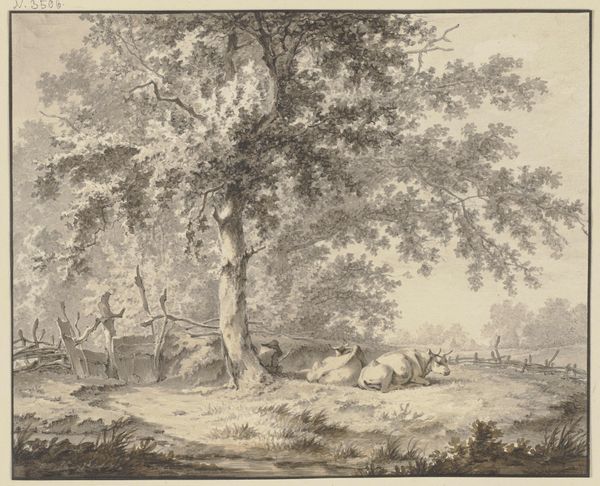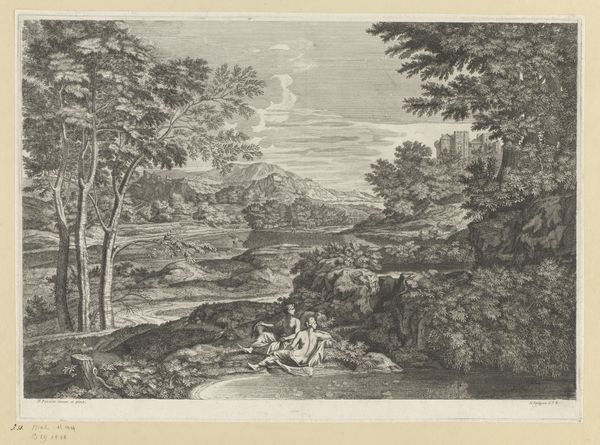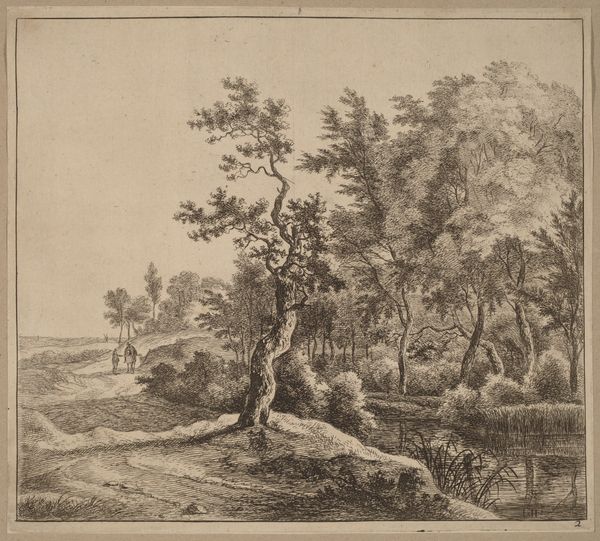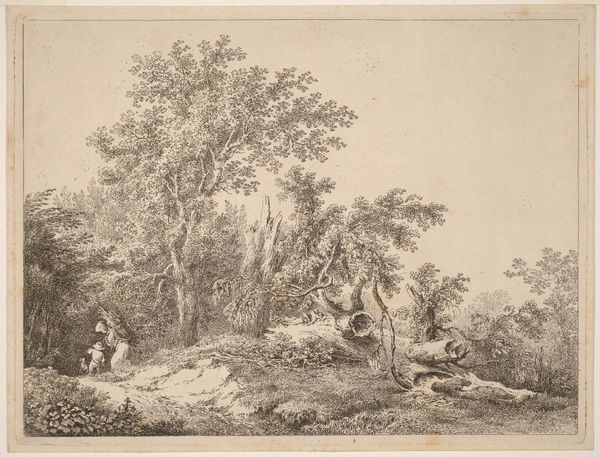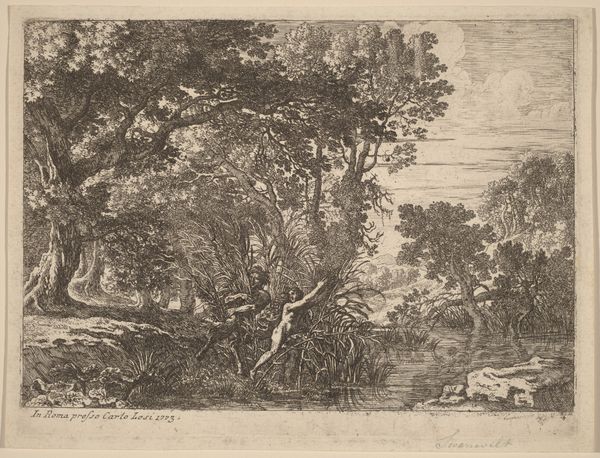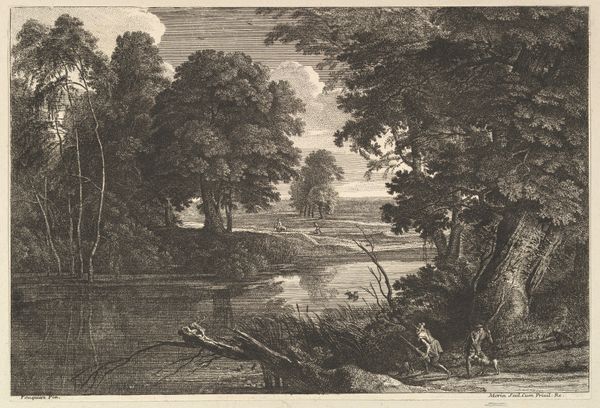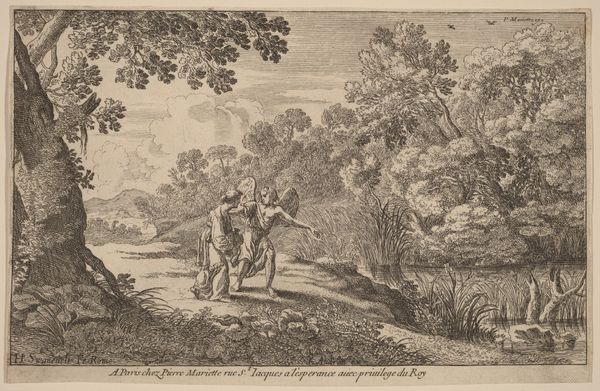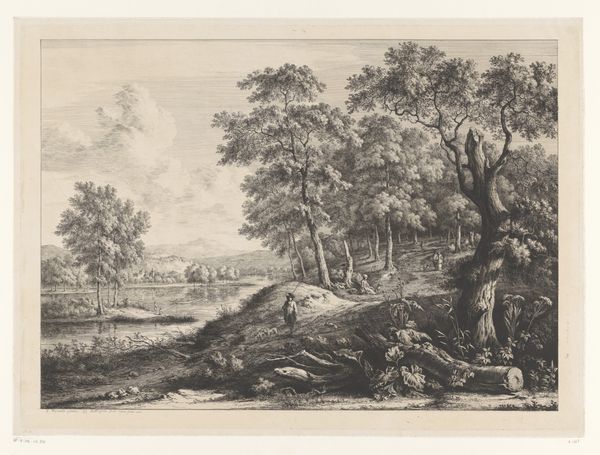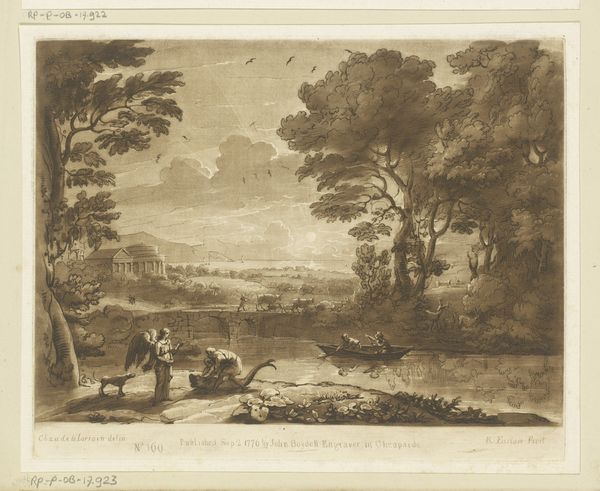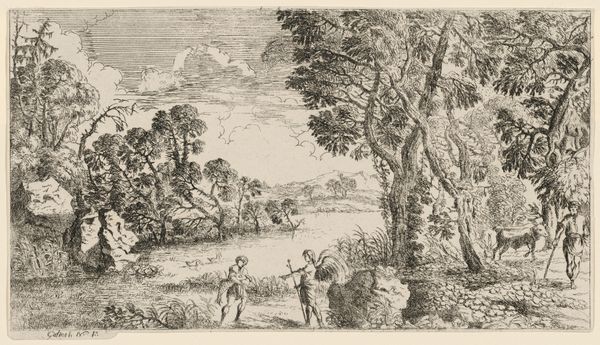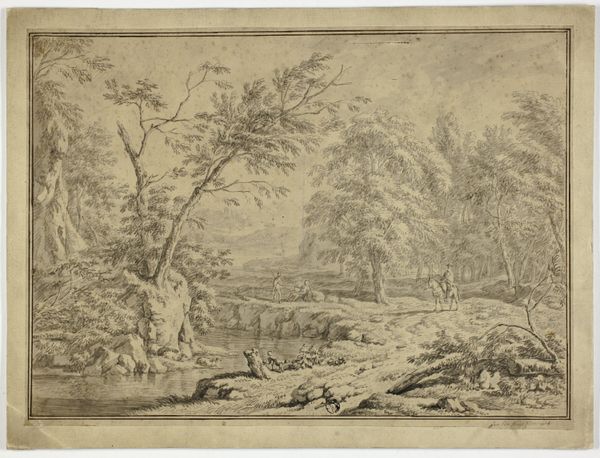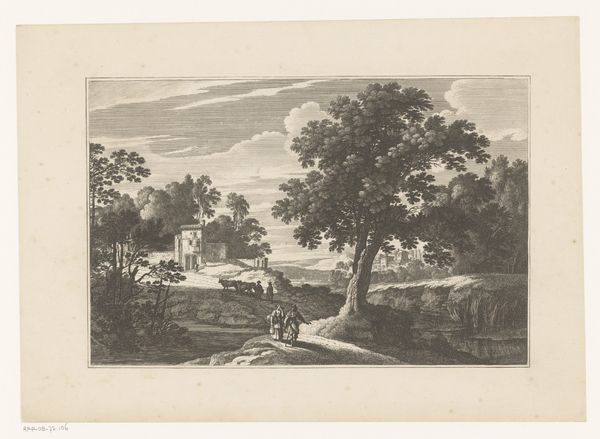
print, etching
#
baroque
# print
#
etching
#
landscape
#
etching
#
figuration
#
history-painting
Copyright: National Gallery of Art: CC0 1.0
Herman van Swanevelt’s etching presents John the Baptist in the Wilderness. This is not painting, sculpture, or any other unique work. It is a print – one of many that could be made from the etched copper plate. To make the image, Swanevelt would have coated a copper plate with wax, then used a sharp needle to scratch away the wax, exposing the metal. The plate was then submerged in acid, which bit into the exposed lines. Ink was then applied to the plate and finally, the image transferred to paper under great pressure, in a printing press. The technique is all about controlled labor. Note how the many lines create a sense of shadow and depth; this is achieved through skillful and highly intentional mark-making. This print, like many others, would have circulated widely – a relatively inexpensive means of disseminating imagery. Etchings like these were crucial in the development of a visual culture we all participate in today. They remind us that art can be inextricably linked to modes of production, commerce, and the democratizing power of distribution.
Comments
No comments
Be the first to comment and join the conversation on the ultimate creative platform.
